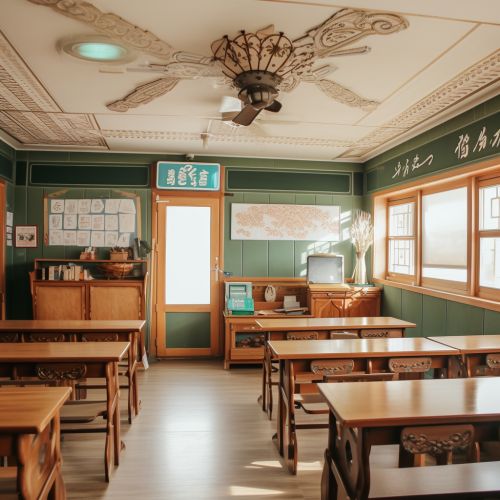Korean language
Introduction
The Korean language, known as Hangugeo in South Korea and Chosŏnmal in North Korea, is an East Asian language spoken by approximately 77 million people worldwide. It is the official and national language of both South and North Korea, with different standardized official forms used in each country. It is also one of the two official languages in the Yanbian Korean Autonomous Prefecture and Changbai Korean Autonomous County in China.
History
The history of the Korean language is usually divided into three periods: Old Korean (until the 10th century), Middle Korean (10th-16th century), and Modern Korean (17th century to the present). The earliest known examples of written Korean are name tags, written in Chinese characters, attached to items found in the tombs of the ancient kingdom of Goguryeo (37 BC – 668 AD).
Classification
The Korean language is classified as a language isolate. This means that it is not related to any other language family and has developed independently. Some linguists, however, propose connections with the Altaic language family, which includes Turkish, Mongolian, and Manchu. Others suggest a connection with the Dravidian languages of South India.
Phonology
The phonology of Korean is complex, with a large number of vowels and consonants. The language also has a pitch-accent system, where the pitch of a word can change the meaning. The Korean language also has a complex system of honorifics, reflecting the hierarchical nature of Korean society.
Grammar
Korean grammar is highly agglutinative, meaning that words are formed by joining morphemes together. The basic word order in Korean is subject-object-verb, which is different from English and many other languages. Korean also has a complex system of honorifics, with different levels of speech for different social situations.
Writing system
The Korean language is written in a script called Hangul, which was invented in the 15th century by King Sejong the Great. Hangul is a featural alphabet, where the shapes of the letters represent the articulatory features of the sounds they represent. Hangul is written in blocks of syllables, rather than in a linear fashion like English.
Dialects
There are several dialects of Korean, which are generally classified into regional dialects. The most widely spoken dialect is the Seoul dialect, which is the basis for standard Korean. Other dialects include the Jeju dialect, spoken on Jeju Island, and the Hamgyong dialect, spoken in the northeastern part of North Korea and the Yanbian Korean Autonomous Prefecture in China.
Learning and teaching
Korean is taught as a second language in many countries around the world, and there are many resources available for learning Korean. The Korean government also runs the King Sejong Institute, a global network of institutions dedicated to teaching Korean language and culture.
Influence and loanwords
Korean has borrowed a large number of words from Chinese, and also has a number of loanwords from English and other languages. In addition, Korean has influenced the vocabulary of its neighboring languages, including Japanese and Russian.
See Also
- Hangul
- History of Korea
- Korean culture
- Korean dialects
- Korean phonology
- Korean grammar
- Korean honorifics
- Korean language and computers
- Korean language in the United States
- Korean studies


